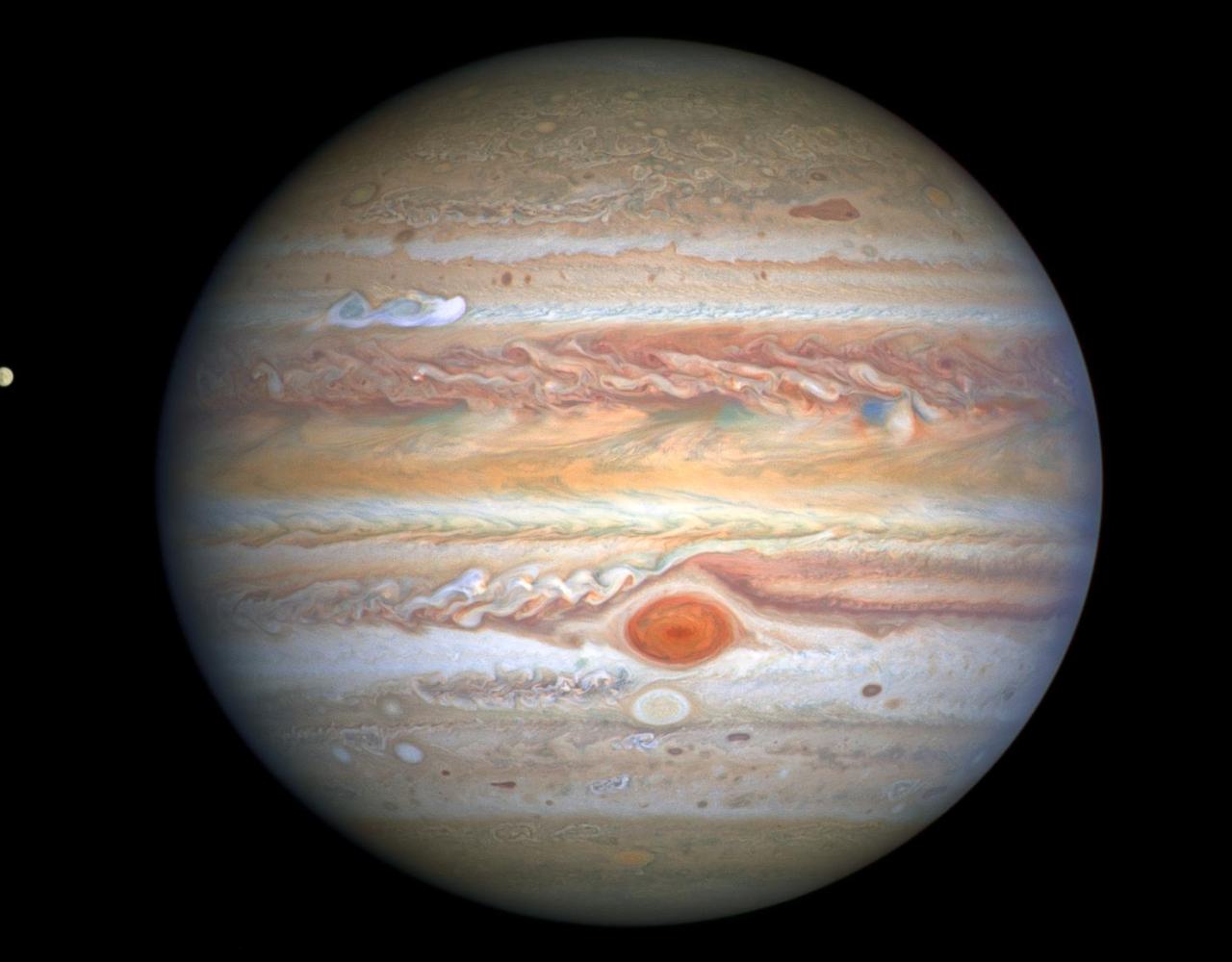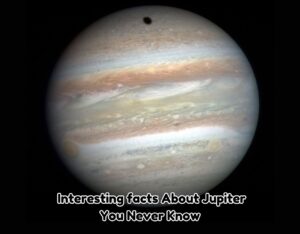Jupiter, the largest planet in our solar system, has always captivated the human imagination with its magnificence and mysterious aura. While astronomers and space enthusiasts have uncovered many of its secrets, there are still numerous intriguing aspects of this gas giant that remain lesser known. In this article, we delve into interesting facts about Jupiter, shedding light on its unique characteristics and the ongoing mysteries that continue to perplex scientists.
The most prominent fact about Jupiter is its giant size which makes it the reason to be visible at night. It is fifth in the number of planets in the solar system. Jupiter is about 2.5 billion times bigger compared to the other planets. It is a composite of gases that give a red color to its atmosphere. It has strong magnetic fields that make it the reason to hold more satellites as compared to the rest of the Solar system.
Here are a Interesting Facts About Jupiter:
Heat on Planet:
The interesting facts about Jupiter is its heat that transmits energy from within its core. It has metallic hydrogen in the fluid state at its core which creates high pressure. There are frequent bursts on the planet now and then that radiate heat energy. This energy is so high that it exceeds the intensity of waves emerging from the Sun. All these facts suggest that Jupiter has a combination of hydrogen and helium with a high density.
Atmosphere:
We can see the surface of Jupiter easily from the Earth even with a moderate type of telescope. Different types of clouds are scattered both horizontally and vertically. These clouds keep on changing positions and directions. The clouds on the surface of Jupiter can be seen as multi-colored bands both light and dark in shade. Sometimes they disappear for a short interval and sometimes for decades.
These bands have varying positions, colors, and sizes. The different colors represent their locations, for example, the yellow color shows the main layer, and the grey and brown shades are the bottom layers. A close-up view of the planet allows us to see its cloudy atmosphere of the planet.

Interesting facts About Jupiter You Never Know
Magnetic Power:
Jupiter’s magnetic field is the strongest of any planet in our solar system, about 20,000 times stronger than Earth’s. This immense magnetic field creates spectacular auroras at the poles, similar to Earth’s northern and southern lights.
Red Spot:
The red spot is the most prominent spot on the planet and is probably the cause of importance and interest to date. It is also because of the variation in the color of clouds present in the horizontal and vertical regions. The red spot is in a longitudinal direction to the planet and keeps on moving.
Initially, the size of the red spot was about 40,000 km when it was first observed in the 19th century. But since then it has kept shrinking and now its size is about 16,000 km and is oval. The enormous size of the red spot is the reason why it is visible. It is one of the interesting facts about Jupiter.
Life on Jupiter:
Based on the analysis of the atmosphere and temperature of the planet, we can say that life is not possible on it. The highly volatile conditions make life impossible on Jupiter. Plus, the surface of the planet is not solid and mostly cloudy. It is just like a huge ocean with an icy layer on top that is unable to support life.
Sound of Jupiter:
Jupiter emits a series of complex radio emissions. These sounds, caused by particles in its magnetic field, have been recorded by spacecraft, providing valuable data about the planet’s inner workings and magnetic environment.
Changing Colors:
Jupiter’s atmosphere is dynamic and its colors change over time. The vivid bands and spots seen through telescopes are the result of chemical reactions in the planet’s upper atmosphere influenced by solar ultraviolet light and charged particles from Jupiter’s magnetosphere.
Shield to the Earth:
It is one of the important facts about Jupiter that it protects the Earth. A few cosmologists trust that the strong gravity of the monster gas which is around 2.4 times that of Earth, pulls a few comets and space rocks hurrying from the external Solar System to its internal piece.
This pull might safeguard Earth from some significant stretch comets that enter the nearby planet group from its external scopes. Without Jupiter close by, extensive stretch comets would slam into our planet considerably more much of the time.
In any case, Jupiter’s strong gravity has likewise assisted with making the space rock belt by keeping space flotsam and jetsam from blending into a planet and pushing a portion of these space rocks towards the Sun and nearer to Earth.
Planet Not a Star:
Cosmologists call Jupiter a bombed star but it can’t be one of the shocking facts about Jupiter. Jupiter is wealthy in hydrogen and helium, but Jupiter has nowhere close to sufficient mass to set off a combination response in its center. This is the way stars produce energy, by combining hydrogen iotas under outrageous intensity and strain to make helium, delivering light and intensity simultaneously.
For Jupiter to become a star, it needs massive atomic explosions. The size of these explosions needs to be massive as compared to the size of the planet. But scientifically it is not possible. Jupiter will stay a huge gas goliath without any expectations of turning into a star.
Day on Jupiter:
With its gigantic size and mass, you’d figure Jupiter would be delayed to pivot around its hub. Nonetheless, it’s the quickest-turning planet in the nearby planet group, with a rotational speed of 45,300 km per hour. A day on Jupiter just endures nearly ten hours.
A year, nonetheless, is significantly longer Jupiter circles the sun every 11.8 Earth years. Furthermore, because of this quick revolution, the planet has an oblate shape with leveled shafts and a protruding equator.
Jupiter Rings:
One of the inspiring facts about Jupiter is that it has a ring framework. Jupiter’s rings comprise three fundamental fragments. An internal torus of particles known as the radiance, a moderately splendid primary ring, and an external gossamer ring.
When shooting stars hit the moon of the planet, they create rings, and when they’re struck by shooting star influences. This material fell into space around Jupiter’s solid gravitational impact. Thring is likewise exhausted and renewed routinely as some material goes towards Jupiter while new material is added by extra effects.
Northern Lights:
Jupiter has natural fireworks called the Northern Lights. Iota particles crash at a high speed in the air and from this splendid sight. Jupiter encounters the most serious auroras in the planetary group, being many times more splendid than on Earth.
Possibility of Diamond Rain:
Scientists speculate that the extreme pressures in Jupiter’s atmosphere could transform carbon into diamonds, possibly leading to “diamond rain” within the deeper layers of the atmosphere.
Conclusion
As we delve deeper into the secrets of Jupiter, we find ourselves in awe of its colossal presence and the myriad of mysteries it holds. Each discovery about this gas giant not only enhances our knowledge of the solar system but also challenges our understanding of planetary science. From its dynamic atmosphere with ever-changing colors to the intriguing possibility of diamond rain and the potential for extraterrestrial life on its moons Jupiter stands as a testament to the complexities and wonders of the universe.
The ongoing exploration of Jupiter through advanced telescopes and ambitious space missions continues to reveal new facets of this giant planet. Its significant impact on our solar system from shaping the orbits of celestial bodies to possibly shielding Earth from cosmic threats underscores its role as a key player in the cosmic dance of planets.
As we stand on the brink of discoveries, Jupiter remains a symbol of the unquenchable human spirit to explore and understand the unknown. Its sheer size, mysterious nature and captivating beauty remind us of the vastness of space and the endless possibilities that await us in the unexplored corners of our galaxy. Jupiter a celestial giant full of surprises, continues to inspire astronomers scientists and dreamers alike fueling the quest for knowledge and the adventure of space exploration for generations to come.

